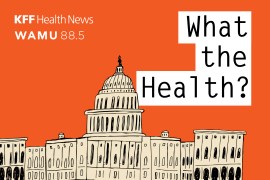Premiums for the state’s 1.3 million Covered California consumers will rise an average 4 percent, officials with the agency said Monday. This increase is slightly less than last year’s increase of 4.2 percent.
“This is another year of good news for California’s consumers and further evidence that the Affordable Care Act is working,” said Covered California executive director Peter Lee.
Consumers who live in different parts of the state will see varying rates. In Southern California, consumers who stay in their plan will see their premiums increase to an average of $296 per month — an increase of just 1.8 percent. But in Northern California, where health care costs are typically higher due to greater consolidation among doctors and hospitals, the increase is an average 7 percent — raising the average monthly premium to $284.
In the Santa Cruz area specifically, premiums will rise 13 percent. Peter Lee blamed providers focused on their bottom line.
“Is it the case that health care really costs that much more in Santa Cruz and Monterey? Are people sicker? I don’t think so,” Lee said. “I’ve seen folks surfing in Santa Cruz; they look pretty healthy. (The increase) is not because of the health plans, it’s because of the underlying health care system.”
On the flip side, some consumers could see their premiums go down, if they choose to shop around.
“Health care is also local. Where you live frames what your options are,” Lee said. “If you live in Los Angeles and you shop around, you could see your premiums go down 11 percent.”
Betsy Imholz with Consumers Union, an advocacy group, called the average increase “terrific” and also encouraged people to shop on price. “Often you can get a lower rate by moving to another carrier,” she said.
Lee said Covered California spent weeks negotiating with insurers, part of the “active purchaser” model in the state’s marketplace.
“We’ve created a market where the consumer drives what’s working in California,” he said. “Throughout our negotiations, consumers in California saved more than $200 million.”
Larry Levitt, senior vice president of the nonpartisan Kaiser Family Foundation, was positive about the “modest” increases. “This shows what a stable, competitive individual insurance market can look like,” he said via email. (KHN is an editorially independent program of KFF.)
In part, Levitt credited the cost containment to Covered California’s “substantial enrollment so far.” It’s a sign, he said, that the marketplace is likely attracting healthy people to help spread the risk of sicker enrollees.
In California, unlike other markets, all policies are standardized. Every “silver” plan, for instance, must be designed the same way, with the same benefits. “I think a key element of California’s success is the standardization of insurance policies, which simplifies the choices for consumers and focuses competition squarely on premiums,” Levitt said.
Not many states have publicly announced their rate data yet, he said. But of those that have released at least some data, California appears to be “a little bit better than average,” Levitt said.
Covered California also announced that two new insurers will join the marketplace. UnitedHealthcare, the largest health insurer in the country, will offer plans in some parts of the state, including the counties that start north of Sacramento and stretch to the Oregon and Nevada borders. Where some people had a choice of only one plan, now they will have two or three.
“Covered California did the right thing by targeting the new additions to the places where more choice is needed,” consumer advocate Imholz said.
Under the UnitedHealthcare plan, people who live near the Oregon and Nevada borders will also be able to cross state lines to see a doctor, a practice that was often prohibited in other plans.
“Sometimes people were driving many hours in order to get care,” said Beth Capell, an advocate with Health Access. People who live in Susanville, for example, were accustomed to getting care in nearby Reno, Nevada. But through Covered California, they had to drive several hours to Sacramento. “They will now have the choice of another carrier that will be offering them coverage beyond the borders of California.”
UnitedHealthcare will also offer plans in Santa Cruz, San Benito and Monterey counties, as well as several Central Valley counties.
Parts of Los Angeles County and Orange County will see new insurer Oscar Health Plan of California, which currently sells insurance only in two states, New York and New Jersey.
In a call with reporters, representatives of both companies stressed technology tools that could help consumers get better care.
Lee said that new additions to the marketplace were chosen because they have good networks and are good for consumers.
“Covered California does not think more plans are always better. In 2014 and 2015 we turned plans away,” he said. “We’re not adding plans just because they knock on our door.”
In addition to the two new plans, all plans from last year were renewed for 2016: Anthem Blue Cross, Blue Shield, Chinese Community Health Plan, Health Net, Kaiser Permanente, Molina Healthcare, Sharp Health Plan, Valley Health Plan, LA Care Health Plan and Western Health Advantage.
The rates announced Monday are preliminary and will be reviewed by state regulators over the next 60 days.
This story is part of a reporting partnership that includes KQED, NPR and Kaiser Health News.







